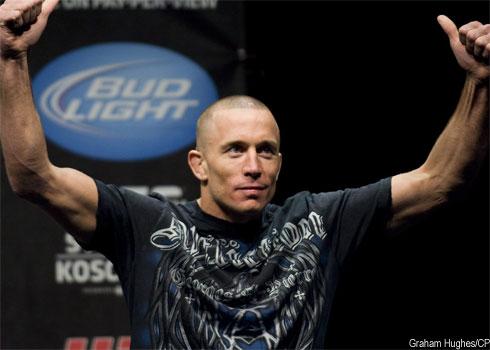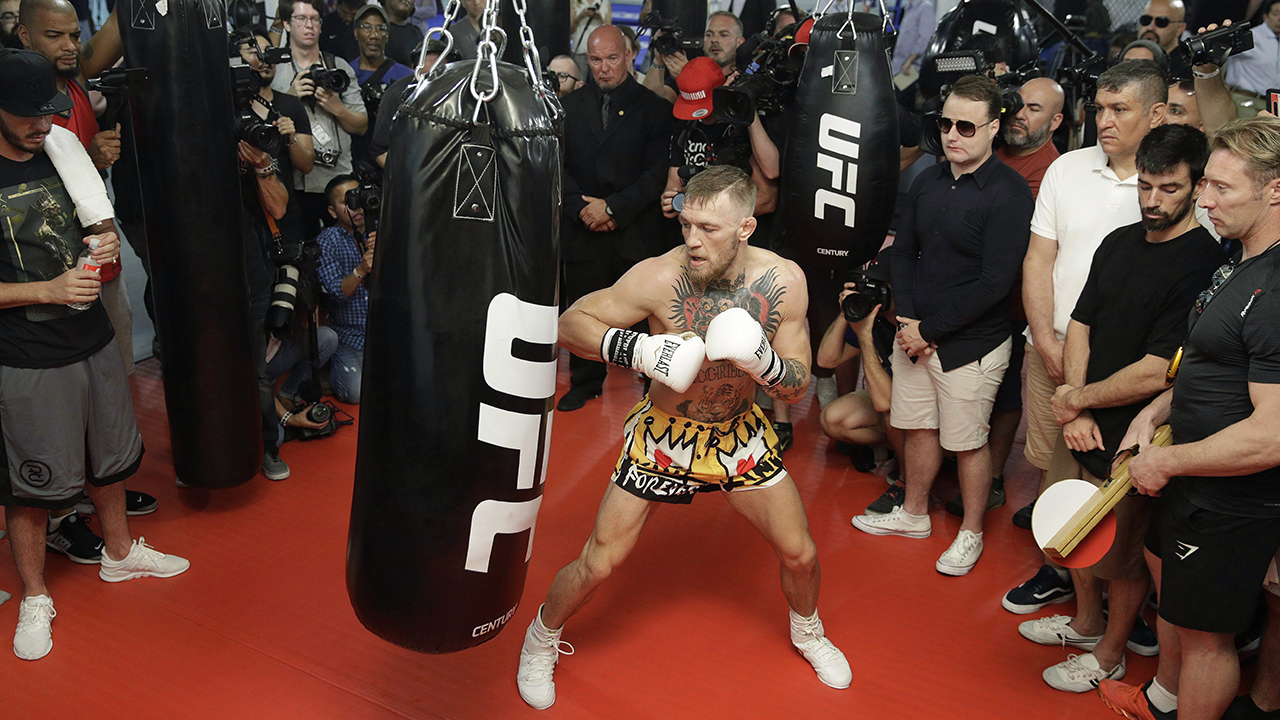Think you know GSP?
You don’t know Georges.
For anyone who watches Stephen J. Wong’s documentary “The Striking Truth” — which chronicles the respective mixed martial arts journeys of Georges St-Pierre and fellow Montrealer David (The Crow) Loiseau — you will learn a new side to the UFC welterweight champion.
Yes, the 29-year-old is the unrelenting competitor fans have come to know in the cage, as well as the poster boy for the sport that is growing faster than any other in North America, not to mention worldwide.
But there is a softer side to the man who makes a living out of physically beating opponents in front of crowds upwards of 20,000.
For example, as St-Pierre reveals in one of many moments of honesty in the film — which was four years in the making and came from complete unfettered behind-the-scenes access to the two fighters during not only their fighting and training, but their personal lives — his “most precious thing in life” is not the gleaming UFC belt he captured on more than one occasion, but a plush unicorn he got from his godmother when he was young.
St-Pierre places such high importance on family life. And the proudest moment of his life was when he was able to pay off his parents’ mortgage with the spoils he’s received from his relatively newfound fame.
The movie, which was actually Loiseau’s idea, featured scenes with St-Pierre’s family, scenes at his old home and at his own house before and after he became famous. It discussed how he was bullied as a kid at school, how he still gets nervous before every fight and how he got sucked into the hype about himself before his famous upset loss to Matt Serra in 2007 — and the belief that that loss turned out to be the best thing that ever happened to him.
On the surface, the movie appears to jump around a bit. While nearly a chronological telling of each fighter’s path from their early days to turning pro to the present, it isn’t completely in order and seems to go back and forth between each fighter at random points.
However the director Wong, who met Loiseau at an autograph session for Xyience energy drink, said at the film’s recent international debut in Toronto it’s not about chronology.
“It was based on the chapter titles: The story of joy. The story of pain. A rise to the top,” Wong explained. “It was more about the content of the scene and the story being told.”
With that understanding, the movie flows quite well. And the scenes are beautifully shot and very professionally produced.
Another thing it appeared to be missing though was actual footage of the most pivotal events of the fighters’ careers. For example, when it described Loiseau experienced the “pain” of losing to Rich Franklin in his only UFC title fight — which precipitated the unfortunate downturn of his career. Or the triumph of GSP when he won the UFC title and the subsequent shock of losing it in that stunning upset to Serra.
While the movie featured some fight scenes from smaller promotions, there were none from UFC events — ostensibly because Wong wasn’t going to pay Zuffa for the rights to show them, though Wong said that was never in the plans
“This is not a story of fighting. This is a story of life,” Wong said. “You can turn on Sportsnet, you can turn on Spike TV and you see that … I wanted to capture the true emotion, the true humans behind the mask.”
Still, it would have captured the emotion of those key moments a lot more effectively had they shown the UFC highlights along with the famous Octagon calls and/or dramatic music — instead of just having a black screen with white letters declaring: “On Nov. 18, 2006, St-Pierre won the UFC welterweight championship.”
But the movie isn’t lacking for strong story-telling sequences. And Wong had ample footage to choose from — over 300 hours of it, to be exact. Cutting that down to the 82-minute feature length was no easy task. He could have easily made it longer, but felt the length he chose was appropriate.
“You always want to keep your audience captivated. This is not ‘Avatar’ where you’ve got bells and whistles and special effects in 3-D. It was more about the content of the film and not the time and duration.”
Ironically, an original plan to produce a 3-D version was ultimately scrapped. But Wong said he was very happy with the finished product. And expect a lot of what ended up on the cutting room floor to make it onto a DVD release of the film.
“There will be deleted scenes,” Wong insisted. “Some really good ones as well. There’s a very in-depth scene (that shows) the science of mixed martial arts. It shows their striking power and their agility and tests their acceleration. It’s very Discovery Channel. But it didn’t fit the story line.”
No wide release date for the big screen has been set yet, but Wong insisted that it will be out in theatres before the UFC comes to Toronto on April 30, when St-Pierre will defend his belt against Jake Shields at the historic event at the Rogers Centre. That could also provide a new chapter for his next venture — Wong admitted he’s already working on another project with GSP.
Wong says the whole idea of the film — and in particular, the title — was to show the fighters’ true character and genuineness.
“That’s ‘the striking truth,’ and that’s not what anyone’s expecting,” Wong said. “Everyone’s expecting to see some action, some fighting or some training, so that’s why I came up with that title.”
One would also expect in a movie about two different people for their stories to be inextricably linked. Yet, it’s just two friends who met in 2001 and happened to train at the same Tristar gym in Montreal.
Still, Loiseau is fine with being portrayed in parallel with GSP, even if the pair’s careers have gone in opposite directions.
“Of course, it doesn’t make me look like the best in the world,” Loiseau admitted. “But it’s a documentary. You can’t script that. Georges, Stephen and I had an agreement, full access and this is what happened. It’s life, you know.
“This is the truth.”
(Big Game) James Brydon’s scorecard: Three out of four stars.
Follow @James_Brydon on Twitter.









